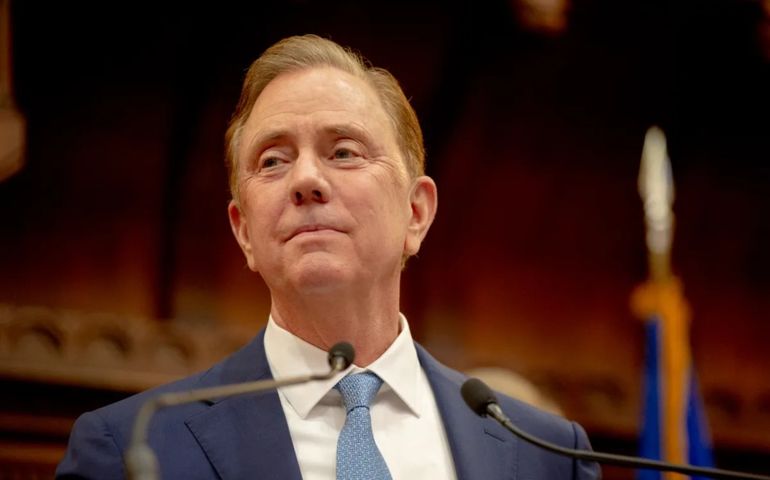Processing Your Payment
Please do not leave this page until complete. This can take a few moments.
-
News
-
Editions
-
- Lists
-
Viewpoints
-
HBJ Events
-
Event Info
- 2024 Economic Outlook Webinar Presented by: NBT Bank
- Best Places to Work in Connecticut 2024
- Top 25 Women In Business Awards 2024
- Connecticut's Family Business Awards 2024
- What's Your Story? A Small Business Giveaway 2024 Presented By: Torrington Savings Bank
- 40 Under Forty Awards 2024
- C-Suite and Lifetime Achievement Awards 2024
- Connecticut's Health Care Heroes Awards 2024
-
-
Business Calendar
-
Custom Content
- News
-
Editions
View Digital Editions
Biweekly Issues
- April 29, 2024
- April 15, 2024
- April 1, 2024
- March 18, 2024
- March 4, 2024
- February 19, 2024
- February 5, 2024
- January 22, 2024
- January 8, 2024
- + More
Special Editions
- Lists
- Viewpoints
-
HBJ Events
Event Info
- View all Events
- 2024 Economic Outlook Webinar Presented by: NBT Bank
- Best Places to Work in Connecticut 2024
- Top 25 Women In Business Awards 2024
- Connecticut's Family Business Awards 2024
- What's Your Story? A Small Business Giveaway 2024 Presented By: Torrington Savings Bank
- 40 Under Forty Awards 2024
- C-Suite and Lifetime Achievement Awards 2024
- Connecticut's Health Care Heroes Awards 2024
Award Honorees
- Business Calendar
- Custom Content
CT tax receipts surge as Lamont prepares new tax-cutting plan
 YEHYUN KIM / CT Mirror
Gov. Ned Lamont.
YEHYUN KIM / CT Mirror
Gov. Ned Lamont.
Projections for state tax receipts ticked upward again Tuesday, pushing the current fiscal year’s surplus beyond $3 billion, according to a new report from Gov. Ned Lamont’s budget office and the legislature’s nonpartisan fiscal staff.
The consensus report also said surging income, sales and corporation tax receipts will give Lamont roughly $600 million in additional revenue to work with on Feb. 8 when he presents lawmakers with a new biennial budget — a package expected to recommend cuts both to income and business taxes.
“This revenue forecast will allow me to present a budget with a sustainable middle-class tax cut, pay down legacy pension debt, support education, child care programs, workforce development, new housing, essential social services, and public safety programs, as well as preserve the fiscal guardrails that have been so critical to our recent budget stability,” Lamont wrote in a statement shortly after the report was released.
Analysts increased their projections for the current fiscal year, which closes June 30, by $265 million on Tuesday. That increase, coupled with the $2.87 billion General Fund surplus the comptroller’s office estimated on Jan. 3, would leave a revised fiscal cushion of more than $3.1 billion.
That 14% surplus would be the second-largest in state history, topped only by last fiscal year’s $4.3 billion windfall.
More importantly, analysts are projecting the state’s biggest revenue engines will continue to surge during the next two-year budget cycle, despite an unstable global economy.
The consensus report increases projected resources for the 2023-24 fiscal year by $287 million, and those for 2024-25 by $313.5 million.
Lamont’s budget director, Office of Policy and Management Secretary Jeffrey Beckham, confirmed the good news but warned these projections only are designed to offer guidance and that the most crucial test of state finances is still months away.
State analysts from both branches develop “consensus” projections three times during the first year: in early November, mid-January and on April 30. The last forecast comes shortly after the state income tax-filing deadline and, traditionally, just before the General Assembly votes on a final budget.
“We are closely monitoring global, national and state economic forces that could positively or negatively impact the final state budget,” Beckham said. “Now is not the time for new unsustainable spending but rather continued sound fiscal management.”
Still, Lamont, his fellow Democrats in the House and Senate majorities, and Republican legislators all have unveiled preliminary agendas built on state tax cuts since the regular 2023 legislative session opened on Jan. 4.
The governor has said he wants to offer Connecticut its first income tax rate reduction since the mid-1990s. And while he hasn’t disclosed full details, he’s said it would be aimed at middle class households that earn less than $200,000 per year.
The administration also is considering a reduction in the pass-through entity tax, a levy paid by the owners of many small and mid-sized businesses who used to report their earnings through the state income tax.
Democratic legislative leaders already have said there is strong support among their members to expand the state’s Earned Income Tax Credit, which benefits working poor families, and to establish an ongoing child tax credit within the state income tax.
Republican legislators, who first proposed an income tax rate cut last spring, have renewed their call for relief in this area. The GOP also has recommended: adjusting income tax rates to offer greater relief during times of high inflation; creating a new income tax credit to assist middle-income renters; repealing the new highway mileage tax on large commercial trucks; and lowering the retail gasoline tax.
Rep. Holly Cheeseman of East Lyme, ranking House Republican on the tax-writing Finance, Revenue and Bonding Committee, noted that the revenue surge reflects “historically high state sales tax collections” driven by inflation.
Analysts project sales tax receipts, which approach $5.1 billion now, will near $5.4 billion by 2025.
“This windfall of sales tax revenue is driven by the state’s high inflation on goods and services and shines a bright light on the financial burdens Connecticut families face daily,” Cheeseman said. “This underscores the need for the legislature to provide tax relief to state residents.”
The State Employees Bargaining Agent Coalition, which represents most major unions within state government, renewed its call Tuesday for Lamont to dramatically increase hiring within most agencies. More than 4,400 veteran workers stepped down between Jan. 1 and June 30 — double the normal total for a full year — to avoid more stringent limits on pension benefits that took effect July 1.
“We cannot continue to be two Connecticuts, one for the few very comfortable and wealthy, and the other for struggling middle and working class families, Black, brown and white,” the coalition wrote, adding that the state government workforce has shrunk by 20% over the past 20 years. “We cannot continue to woefully underfund our public services and let working families suffer while our state coffers continue to grow to outsized proportions.”

2022 Giving Guide
This special edition informs and connects businesses with nonprofit organizations that are aligned with what they care about. Each nonprofit profile provides a crisp snapshot of the organization’s mission, goals, area of service, giving and volunteer opportunities and board leadership.
Learn more
Subscribe
Hartford Business Journal provides the top coverage of news, trends, data, politics and personalities of the area’s business community. Get the news and information you need from the award-winning writers at HBJ. Don’t miss out - subscribe today.
Subscribe
2024 Book of Lists
Delivering Vital Marketplace Content and Context to Senior Decision Makers Throughout Greater Hartford and the State ... All Year Long!
Read Here-
2022 Giving Guide
This special edition informs and connects businesses with nonprofit organizations that are aligned with what they care about. Each nonprofit profile provides a crisp snapshot of the organization’s mission, goals, area of service, giving and volunteer opportunities and board leadership.
-
Subscribe
Hartford Business Journal provides the top coverage of news, trends, data, politics and personalities of the area’s business community. Get the news and information you need from the award-winning writers at HBJ. Don’t miss out - subscribe today.
-
2024 Book of Lists
Delivering Vital Marketplace Content and Context to Senior Decision Makers Throughout Greater Hartford and the State ... All Year Long!
ABOUT
ADVERTISE
NEW ENGLAND BUSINESS MEDIA SITES
No articles left
Get access now
In order to use this feature, we need some information from you. You can also login or register for a free account.
By clicking submit you are agreeing to our cookie usage and Privacy Policy
Already have an account? Login
Already have an account? Login
Want to create an account? Register
Get access now
In order to use this feature, we need some information from you. You can also login or register for a free account.
By clicking submit you are agreeing to our cookie usage and Privacy Policy
Already have an account? Login
Already have an account? Login
Want to create an account? Register





0 Comments